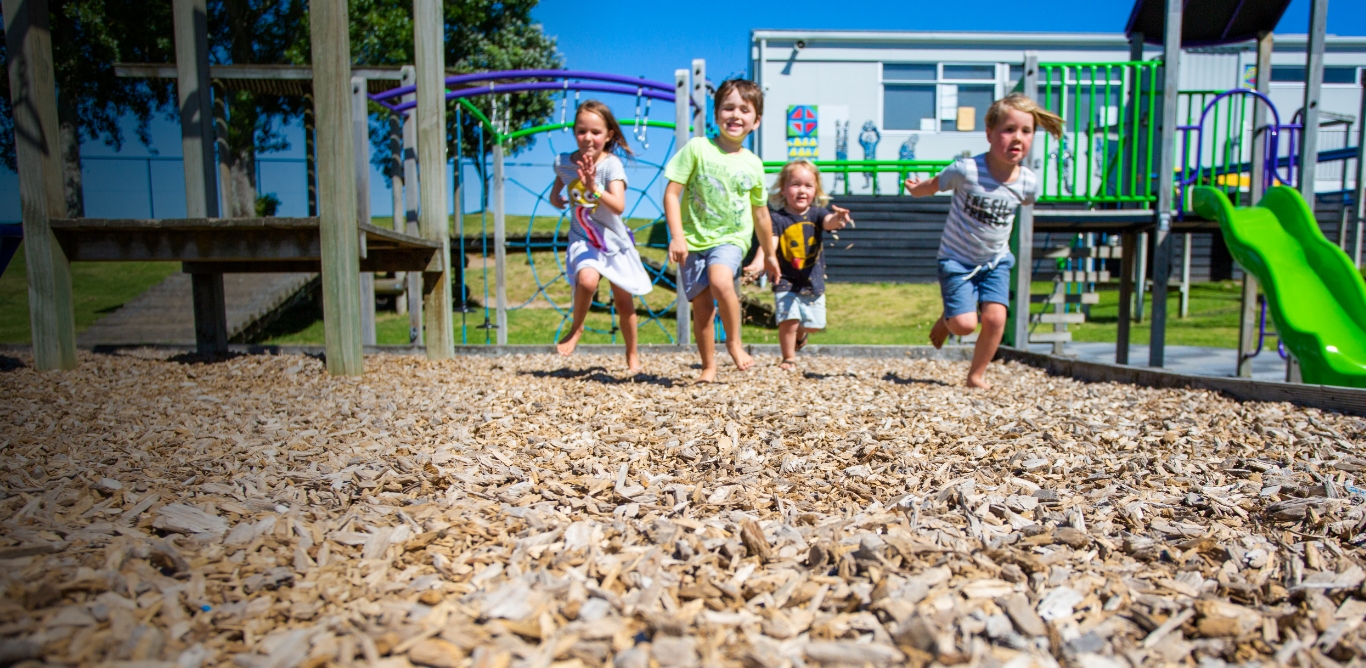Playgrounds are where cherished childhood memories are made, and selecting the right surface material is critical to ensure the safety and enjoyment of children.
While rubber matting is a valid choice, woodchips are becoming increasingly recognised as a great alternative. In this blog post, we’ll explore the factors that make woodchips a better option than rubber matting for playgrounds, focusing on safety, eco-friendliness, aesthetics, cost-effectiveness and accessibility.
1) Safety First
Safety is paramount when it comes to playground surfaces, and wood chips outperform rubber matting in several key ways:
- Impact Absorption: Woodchips provide exceptional impact absorption, reducing the risk of injuries resulting from falls. The cushioning effect of woodchips helps protect children from sprains, fractures and bruises.
- Natural Traction: Woodchips offer a natural, non-slip surface. This natural traction is particularly beneficial during wet or rainy conditions, reducing the likelihood of slips and falls.
2) Eco-Friendly
With growing concerns about sustainability, woodchips shine in terms of their environmental impact:
- Biodegradability: Unlike rubber matting which takes centuries to break down, woodchips are biodegradable and return to the earth without causing harm to the environment.
- Renewable Resource: Woodchips are made from sustainable, recyclable resources. This minimises the depletion of natural resources.
- Reduced Carbon Footprint: The production of woodchips consumes less energy compared to the manufacturing of rubber matting, resulting in a smaller carbon footprint.
3) Aesthetic Appeal
Woodchips introduce a touch of nature to playgrounds, enhancing their overall aesthetic appeal. They seamlessly blend with the natural surroundings, creating a warm and inviting atmosphere that both children and parents can appreciate. Woodchips can be incorporated into various playground designs, making them a versatile choice for any setting.
4) Cost Effectiveness
Woodchips are a budget-friendly alternative when compared to rubber matting. Initial installation costs are often lower, and maintenance expenses are minimal. Over time, choosing woodchips can lead to significant savings for playground owners.
5) Accessibility
Woodchips are readily available and can be replenished as needed. This ensures that the playground surface remains safe and well-maintained over time. In contrast, repairing or replacing damaged rubber matting can be a more complex and costly process.
Opting for woodchips not only creates a safer environment for children but also contributes to a more environmentally responsible and visually pleasing space. With a combination of safety, eco-friendliness, aesthetics, cost-effectiveness and ease of maintenance, they are the ideal choice for playground surfaces that prioritise the well-being of children and provide an eco-friendly and sustainable option.



